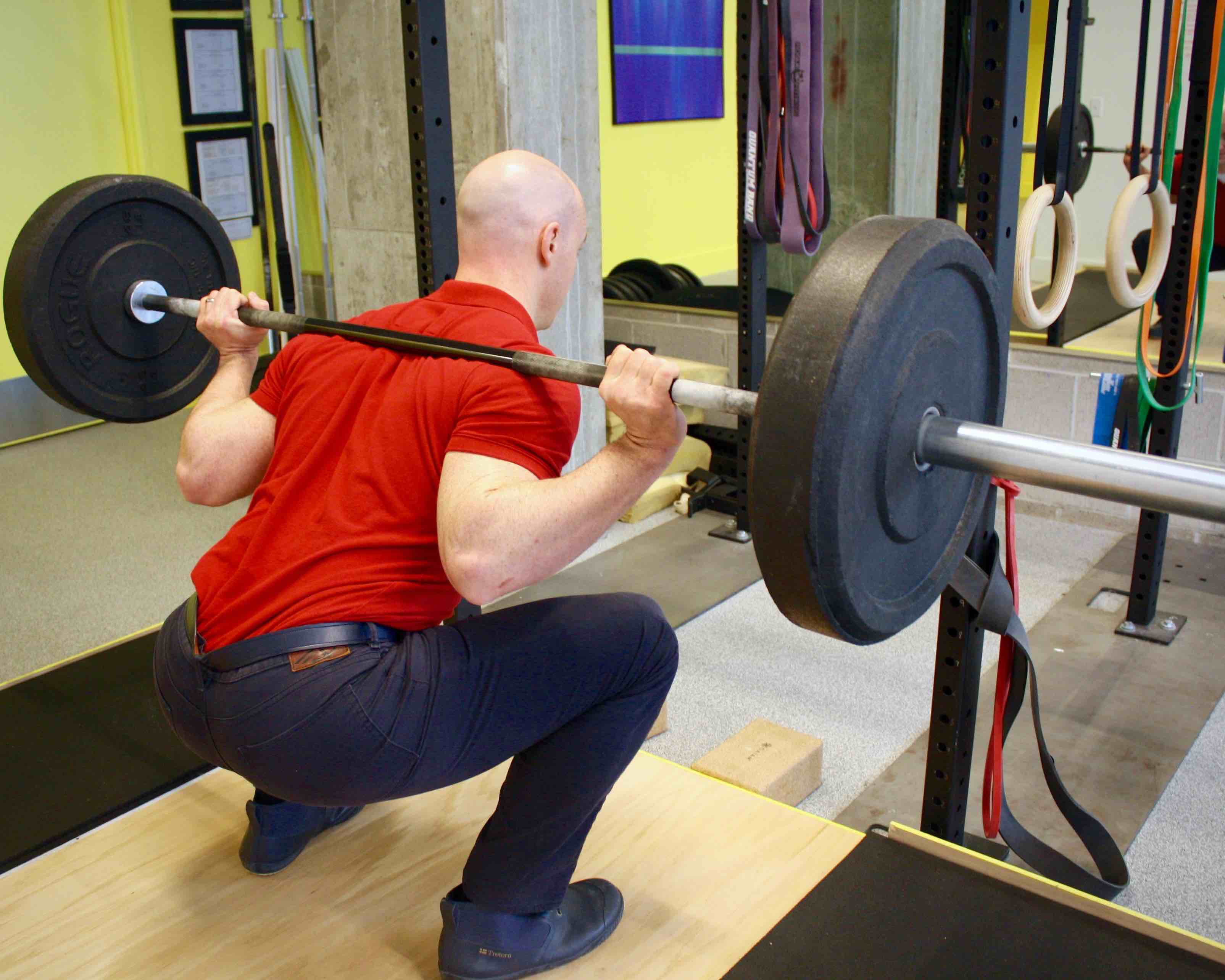
Where to start?
Many of our patients enjoy fitness but are unsure when they will be ready to start their “regular workouts” after finishing with active treatment. We are eager to get our patients back on their feet and progressing towards their previous level of fitness, but it can be difficult without knowing the medical background of personal trainers outside of our clinic. Getting a patient to a point where they are pain free is the first goal, but we also strive to provide them with the tools and exercises to prevent the injury from occurring again.
At Hosmer Chiropractic Health regularly see this injury cycle repeating itself, which is why we offer medically supervised personal training sessions with our Exercise and Rehabilitation Specialists. By training under the treatment plan of your doctor, we are able to seamlessly bridge the gap between rehabilitation and strength training. These sessions work specifically at improving movement patterns and mobility at a base level to fix the underlying problem creating the injury. Our technique to achieve this follows a multi-faceted approach:
- Screen with the Functional Movement Screen (FMS).
This screen is an excellent tool that uncovers faulty movement patterns, be it overly-tight muscles, weak muscles, or just poor movement programing.
- Make sure fundamental movement patterns are correct.
You have to know how to walk before you can run, and you have to know how to crawl before you can walk. We must make sure you have a solid grasp of fundamental movement patterns.
- Prescribe rehab exercises to bridge the gap from acute pain to where you want to be.
This means you have to be doing some work at home as well as in the clinic under our supervision.
- Home rehabilitation exercises
The home care that is prescribed after your treatment is vital for your recovery. It is designed to complement your treatment. We get comfortable with being uncomfortable — by that I mean our postural dysfunctions start to feel “normal” to us, and corrections start to feel “wrong.” It’s the same with our muscles: They have been programmed to hold incorrect postures for so long that it becomes the new “normal.” After a correction, muscles want to go back to the dysfunctional position, even if that causes pain. Home care helps to prolong the relief of chiropractic adjustments, speeding up your recovery, reducing pain and irritation, and getting you closer to doing the things you love.
Case History Examples
Runner With Lower Back And Knee Pain
We had a patient who was having lower back pain and knee issues with running. Our doctor discovered that she had a tight left sacroiliac (SI) joint, which was leading to her back pain and tight hamstrings. After her SI joint was aligned, and her hamstring was released using chiropractic manipulative treatment, she experienced a great decrease in her pain. However, as she began running again, her pain returned. After a Functional Movement Screening, we were able to determine that she had poor glute and abdominal activation. When this happens, the body is not able to properly stabilize, so the body looks for new (i.e. poor) ways of protecting the spine (by keeping the body from collapsing). Since this patient could not properly recruit the glutes and abdominals, her body was forced to default to the SI joint and the hamstrings, which are ineffective and can be quite painful. By training her abdominals and glute musculature to stabilize, the impact from running was safely absorbed, thus protecting her back and eliminating pain.
Weightlifter With Neck And Shoulder Pain
A recreational power and olympic lifter came in for treatment of neck and shoulder pain that had been consistently bothering him both while lifting, and while working seated at his desk. The patient was treated with chiropractic care and myofascial release/massage therapy. He was also given rehabilitation and self-treatment exercises and with our guidance, he changed his working posture and began standing. All of these treatments and changes helped to continually provide relief of his symptoms at the neck and shoulders and the patient felt cured from his symptoms. However, when the patient returned to his power and olympic lifting routines he felt a near immediate return of his symptoms. The patient came back in for treatment and expressed his frustration at having re-aggravated his symptoms. It was decided he needed a review of his homecare and a fine tuning of his lifting technique. We ran the patient through a Functional Movement Screening and examined his lifting technique. We found several muscular imbalances as well as improper recruitment patterns. The patient was then recommended 12 sessions to retrain his lifting mechanics, and longer rehab sessions to better train and prepare him for pain free lifting. For most lifters, one of the most invaluable benefits to these sessions is having a trained professional watch them perform their lifts to address movement faults.
Find Out How You Benefit
If you feel like you are re-aggravating your symptoms regularly, it’s time to come in to try our 1-hour medically supervised personal training sessions with one of our Exercise and Rehabilitation Specialists. Feel free to ask your chiropractor about their recommendations at your next appointment. We’re also happy to answer questions about payment options for this service – including how to utilize health insurance coverage. Call us at (503) 227-2279 for any questions.